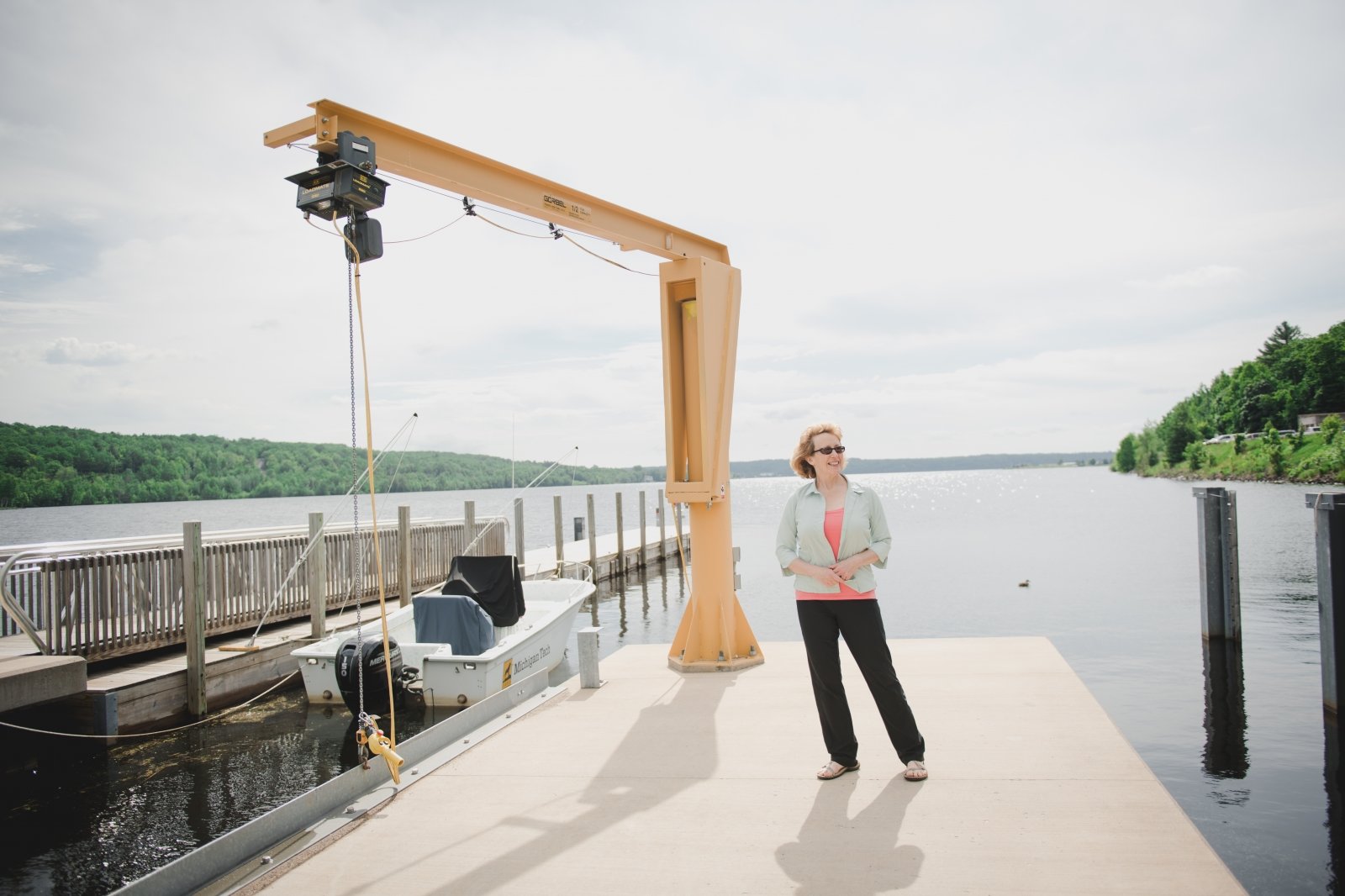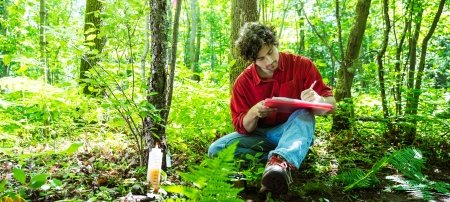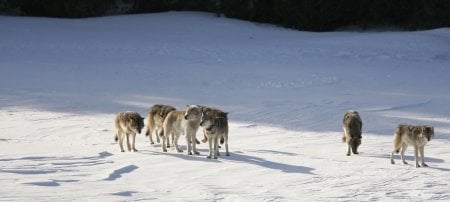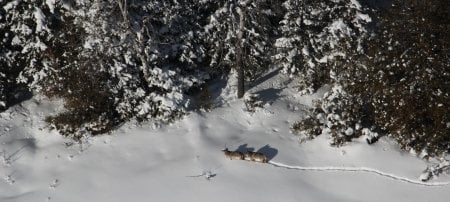Death of the "Doughnut": How Quaggas Are Casting a Pall on the Lake Michigan Fishery

Something has been eating Charlie Kerfoot’s doughnut, and all fingers point to a European mollusk about the size of a fat lima bean.
No one knew about the doughnut in southern Lake Michigan, much less the mollusk, until Michigan Technological University biologist W. Charles Kerfoot and his research team first saw it in 1998. That’s because scientists have always been wary of launching their research vessels on any of the shipwreck-studded Great Lakes in winter. But NASA’s new Sea-viewing Wide Field-of-view Sensor (SeaWiFS) Project was giving scientists a safer way to look at the lakes in bad weather. SeaWiFS satellite data showed Kerfoot’s team a roughly circular river of phytoplankton—algae and other tiny plants—that was drifting counterclockwise around the southern end of Lake Michigan, creating a doughnut.
The group determined that the doughnut was formed when big winter storms kicked up sediments along the southeastern shore of the lake. There, Michigan’s biggest rivers drain a watershed rich in phosphorus and other nutrients from cities and farms. Those nutrients settle in the lake’s sediments until storms stir them up. Then, suspended in the water column, they begin circulating in a slow-moving gyre that flows from Grand Haven in the north to Chicago in the south. That gyre creates a Thanksgiving feast for phytoplankton. “We saw that with each storm, you get a ring, and it can persist for weeks or even months,” says Kerfoot.
“We were floating in the clouds, saying ‘Hey, we discovered a new phenomenon,’” he remembers. Samples of lake water taken from research vessels verified the satellite data. Plus, they found that zooplankton, the tiny animals that feed on phytoplankton, were much more abundant in the doughnut. For them, the seasonal bloom was an all-you-can-eat salad bar, an important part of their strategy to survive winter. Those zooplankton were eaten in turn by small fish, which were eaten by large fish, which fueled an angling paradise productive enough to merit the nickname Lake Fishigan.
Then, almost as soon as it was discovered, the doughnut started to disappear. “Since 2001, the chlorophyll has been nibbled away on the edges, right where the quaggas are,” says Kerfoot.
The quagga mussel has been found in all of the Great Lakes, introduced by ocean-going vessels when they dump their untreated ballast water. In addition to clinging to hard surfaces like the more famous zebra mussel, the quagga also burrows into soft lake bottoms, where they can be found in concentrations of 10,000 to 15,000 per square meter. Their favorite food is phytoplankton, and they have prodigious appetites. Hank Vanderploeg, a colleague of Kerfoot at the NOAA Great Lakes Research Laboratory, calculated that they can filter up to one third of the water column in a day in the band of water around the lake that’s between 30 and 50 meters deep, says Kerfoot. There, they are consuming five to seven times as much phytoplankton as is being produced. “No surprise that it’s that area that’s cleaning up the most,” he says.
Using SeaWiFS, graduate student Foad Yousef has plotted a 75 percent decline in chorophyll a, a measure of phytoplankton abundance, from 2001 to 2008. “You are seeing a displacement of productivity from the water column to the benthic layer,” Kerfoot says. “It’s fascinating.”
That means that all the energy in the phytoplankton, which once fed fish, is being sucked down to the bottom of the lake by quaggas, who then eject it in the form of pseudo feces—mussel poop. That can stimulate the growth of Cladophora algae, which die, decompose and remove all the oxygen from the surrounding water, to ill effect. “When things go anaerobic, that kills off everything, including the quaggas, and creates conditions for botulism. We’ve had massive kills of fish-eating birds—loons, mergansers,” says Kerfoot. “Isn’t that bizarre? Who would have predicted that?”
Under such conditions, however, it is predictable that populations of zooplankton will decline, and following them, the alewives, chubs, Atlantic salmon, muskies, smelt, walleyes, perch and the rest of the hundred or so species of fish that inhabit the southern part of Lake Michigan. “A high percent of the fish biomass could be lost in the next couple years,” Kerfoot says. NOAA scientists have already documented declines in several species. “We have a system that’s crashing.”
Why, then, isn’t somebody doing something? Kerfoot was wondering himself, so he asked the NOAA scientists who are charged with keeping their thumbs in the dike to protect the Great Lakes from invasive creatures like the quaggas. “I asked why they weren’t swimming in money to do something about this,” he says. “They say people are getting tired of hearing that the sky is falling. Now, when the sky really is falling, they aren’t paying attention.”
One exotic species Kerfoot isn’t worried about is the Asian carp, which has all the Great Lakes states up in arms for fear that it will enter the water system and destroy the fishery. Quaggas will have done that job before the 20-pound bottom feeders can even get a toehold, he says. “By the time the carp get here, there won’t be anything left for them to eat.”
A paper on their research, "Approaching Storm: Disappearing Winter Bloom in Lake Michigan," has been published in Volume 36, Supplement 3, of the Journal of Great Lakes Research. Coauthors include Sarah Green, chair of the chemistry department, Judith W. Budd, and David Schwab of the NOAA Great Lakes Environmental Research Laboratory, as well as Yousef and Vanderploeg. Funding for Kerfoot’s research was provided by NOAA and the National Science Foundation.
Michigan Technological University is an R1 public research university founded in 1885 in Houghton, and is home to nearly 7,500 students from more than 60 countries around the world. Consistently ranked among the best universities in the country for return on investment, Michigan's flagship technological university offers more than 120 undergraduate and graduate degree programs in science and technology, engineering, computing, forestry, business, health professions, humanities, mathematics, social sciences, and the arts. The rural campus is situated just miles from Lake Superior in Michigan's Upper Peninsula, offering year-round opportunities for outdoor adventure.




Comments